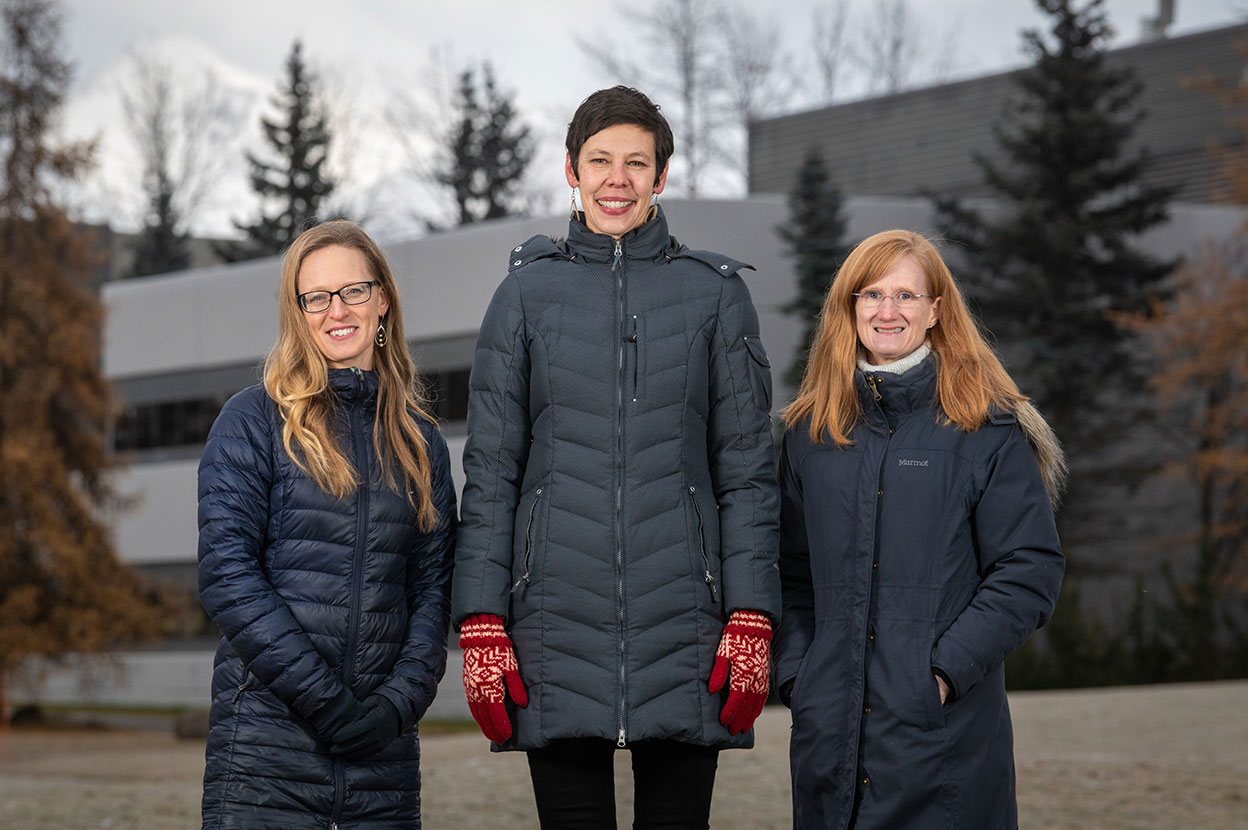Project BLENDS graduate collaboration to promote early childhood mental health
by Matt Jardin |
 As early as 2013, education researchers have called for increased interdisciplinary
personnel preparation training, with evidence supporting its increased outcomes for
children with disabilities dating back even further to 2009. This need is especially
important in Alaska, where only a few early childhood education programs are available
at UAA and UAF, despite it being identified as one of the highest workforce needs across the state.
As early as 2013, education researchers have called for increased interdisciplinary
personnel preparation training, with evidence supporting its increased outcomes for
children with disabilities dating back even further to 2009. This need is especially
important in Alaska, where only a few early childhood education programs are available
at UAA and UAF, despite it being identified as one of the highest workforce needs across the state.
Filling the need for advanced training is Project BLENDS, a new interdisciplinary program at UAA consisting of principal investigator Hattie Harvey, Ph.D., associate professor of psychology, with senior personnel Mary Dallas Allen, Ph.D., professor of social work, and Cary Moore, Ph.D., program director of occupational therapy. Rounding out the team is Karen Gallagher, Ph.D., program director of speech-language pathology, who stepped into the position originated by term assistant professor Heidi Feuerhelm.
“Foundationally, 90% of brain development occurs within those first years of birth through age three,” said Harvey. “To be successful later in life, those experiences for an infant and toddler to feel safe, secure and have responsive adults is critical. Anything we can do to build capacity for service providers to not just provide direct support, but also use a collaborative approach to support caregivers in promoting social-emotional development, ultimately benefits the child and their family.”
Project BLENDS will develop a training model at UAA for four overlapping service disciplines in order to serve young children with high-intensity social-emotional needs and their families. Over the course of five years, 32 scholars — eight per year, two per program — from the Master of Science in Communication Sciences and Disorders, Master of Social Work, Master of Science in Clinical Psychology and Doctor of Occupational Therapy will prepare to meet a state-identified workforce need for qualified, related service personnel.
Funded by a $1.1 million grant awarded in October 2021 from the U.S. Department of Education Office of Special Education, Project BLENDS stands unique among other awardees in its focus on interdisciplinary collaboration among four disciplines (the grant required only two disciplines). According to Harvey, the need to work together and wear multiple hats isn’t merely aspirational but a necessity given the more limited access to resources available in Alaska’s rural communities.
“Integrating the four programs made sense because we have such limited capacity, particularly in rural Alaska,” said Harvey. “The speech language pathologist might be the key provider to a family or community, so they’re also having to integrate those occupational therapy goals and developmental goals, as well as support child-caregiver relationships. For those providers, having more of an interdisciplinary understanding is going to better build capacity to serve those families and children.”
To prepare applicants for an environment of collaboration, Project BLENDS scholars will spend their final academic year participating in shared courses, assignments and field experiences that focus on four competency areas developed using the Early Childhood Cross Disciplinary Guide: interdisciplinary collaboration and coordination, family-centered practices, cross-discipline evidence-based practices and interdisciplinary professionalism. Integration of infant and early childhood mental health principles, such as responsive parent-child interactions, will be emphasized to support the needs of Alaska’s families and young children.
Beyond the impressive coordination required to build such a multifaceted program between four programs, community partnerships played an equally pivotal role in securing the original grant — 14 letters of support were written by organizations including the Alaska Department of Education and Early Development, RurAL CAP and the Bristol Bay Native Association. And as potential members of the Project BLENDS community advisory board and future employers of Project BLENDS graduates, those partnerships are more crucial than ever in determining the program’s success.
“Each graduate program has its own competencies, accreditation standards and internship requirements. So to find a way in which we can add shared experiences to these really robust programs was tricky, but was really key,” said Harvey. “This is a good example that collaboration across colleges can be successful. Ultimately it’s for the benefit of preparing students to provide high-quality early childhood services. That's really what it’s all about.”
This story originally appeared in the UAA Green and Gold News.









